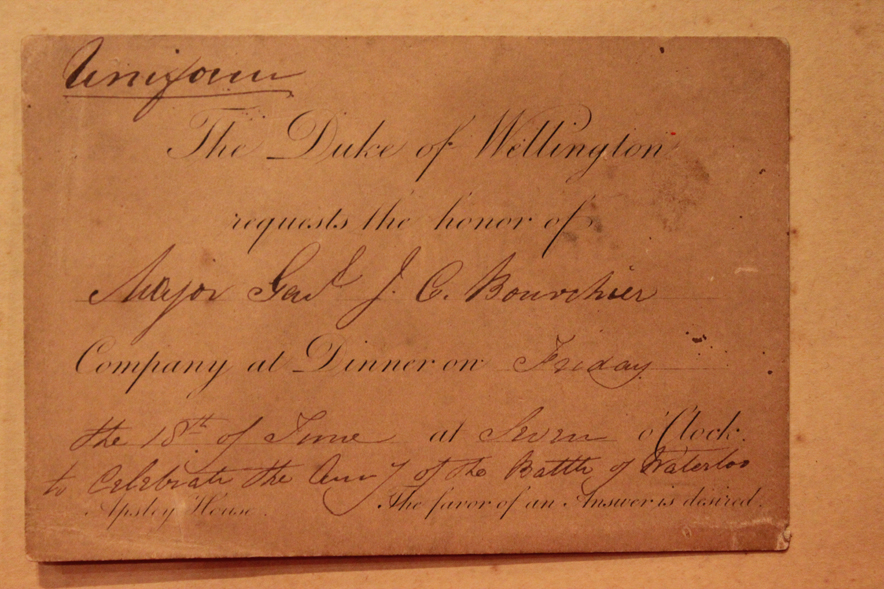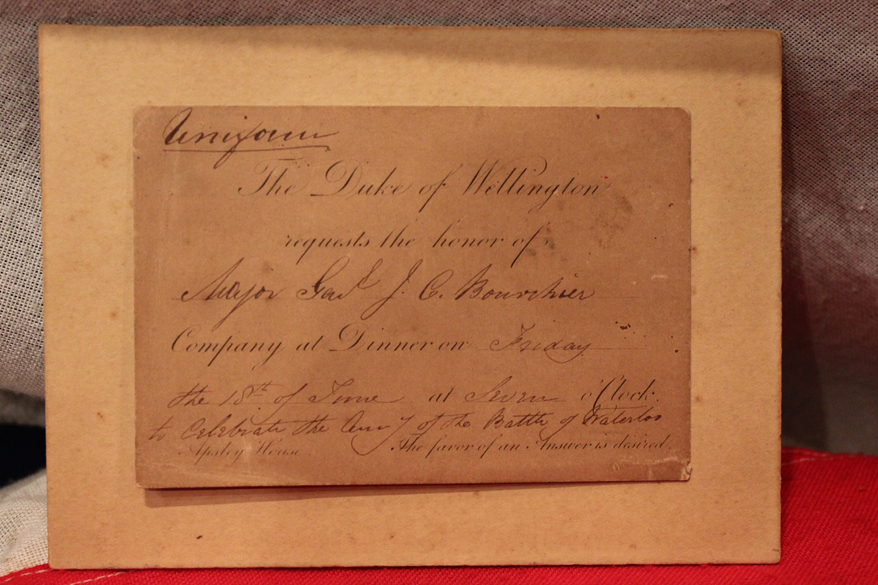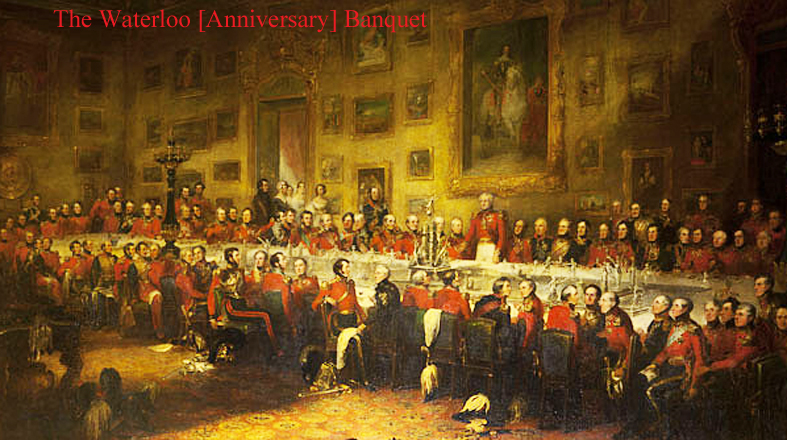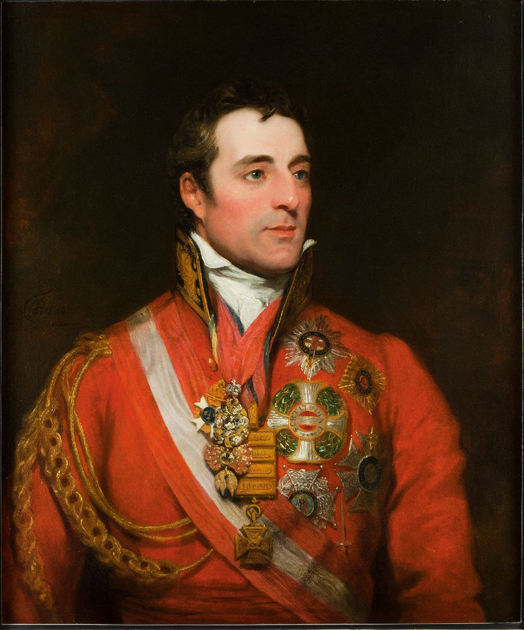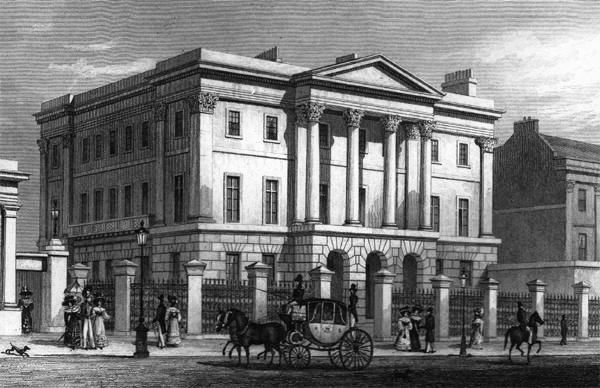An Invitation From the Duke of Wellington To Major Gen Bourchier, Noted Veteran of the Battle Of Waterloo. A Personal Invitation From Wellington to Attend The Waterloo Anniversary Celebration Banquet at Apsley House
As a young Captain/Major Lt General Bourchier served in the 11th Light Dragoons in the Peninsular War and with distinguished heroism at Waterloo. For his bravery he was awarded a gold medal and promoted by Wellington to Brevet Lt. Colonel and later became the Colonel of the 3rd Dragoon Guards. His son was awarded the Victoria Cross aged 23 for service in the Crimean War.
This personal invitation from the Duke of Wellington is to attend the special Waterloo anniversary dinner at Apsley House. We also had the 1796 pattern sabre now sold made for the IIth Light Dragoons. The 11th Light Dragoons later became the 11th Hussars. The 11th fought at both the Peninsular War and at the Battle of Waterloo, and were awarded almost 500 medals for Waterloo. After a spell in Ireland the 11th were sent to Spain and Portugal to reinforce Wellington's army. Their strength, normally around 300 in peacetime was raised to 725. They arrived in June 1811 and, as in Egypt, they had a bad start. A dawn attack by the French in woods between Elvas and the Guadiana forced the 11th to retire on to what they thought were friendly portugese lines. When they realised they were French, their commander Capt Lutyens ordered the charge. The shock tactic worked and they were able to drive their way through, but a second line of enemy troops was able to resist them. They lost 8 killed, 22 wounded and 77 taken prisoner.
The regiment had more success at El Bodon near Cuidad Rodrigo on 25th September. By this time they were commanded by Lt Col Cumming, a brave and efficient cavalry officer. A large force of French cavalry was threatening Allied infantry and artillery on the plain in front of the 11th and a squadron of the King's German Legion who were well placed on high ground. Although they were vastely outnumbered the 11th and KGL charged at the enemy again and again, 20 times in all.
The 11th were part of Wellington's great victory over Marmont at Salamanca on 22nd July 1812 but by 3rd April 1813 they had to give up their horses and embark for England much to the regret of Sir Stapleton Cotton who was in command of the cavalry in the Peninsula. It had been a hard two years for them having lost 417 men and 555 horses.
During their time in the Peninsula many changes had been made to the uniforms of the British Army. The Prince Regent had a keen eye for dress and with his newly acquired position of supreme power was determined to push through his ideas dased on continental military trends. The 11th exchanged it's light dragoon Tarleton helmet for a shako. The new jacket was still dark blue but had a buff plastron covering the chest, and white epaulettes, silver for officers. With the return of Napoleon in March 1815 the war with France resumed and the 11th arrived at Ostend on 2nd April. They were in Vandeleur's brigade with the 12th and 16th and had an unprecedented strength of 947 men. They came under heavy attack at Quatre Bras but did not suffer badly. On the 18th June 1815 the Battle of Waterloo began after a terrible night of torrential rain. It was a frustrating morning for the British cavalry who had to stand and watch an infantry battle. Against Wellington's wishes, the heavy cavalry made a brilliant charge that was spoiled by it's failure to re-form. The 11th under the command of Lt Col Money were sent into action when it looked as if the enemy were breaking up. They broke a French infantry square and carried on with the pursuit of Naploeon's fleeing soldiers.
Wellington entered Paris in triumph on 7th July escorted by the 11th and others. The regiment bivouacked on the Champs Elysees and became part of the army of occupation in France and Belgium. On 20th November they eventually arrived home after 3 years on the continent
Code: 19367
950.00 GBP

